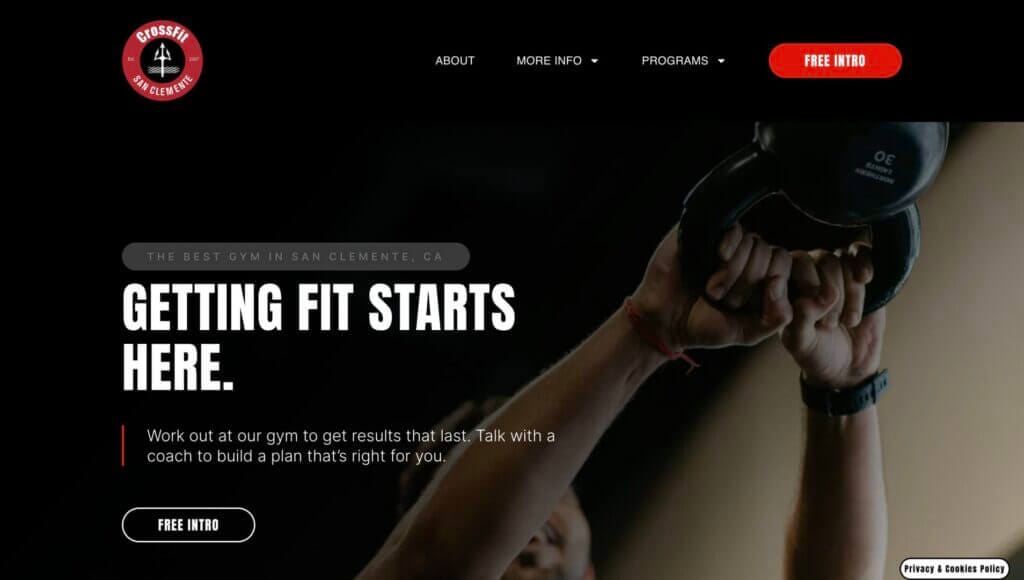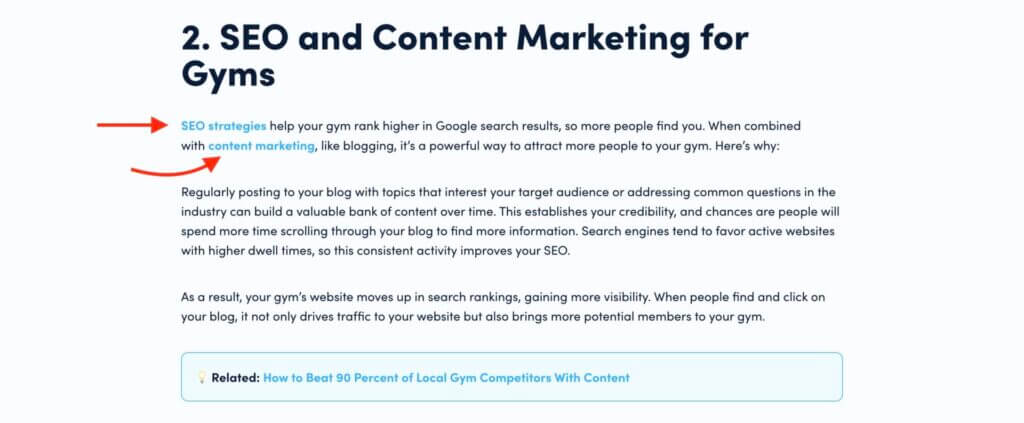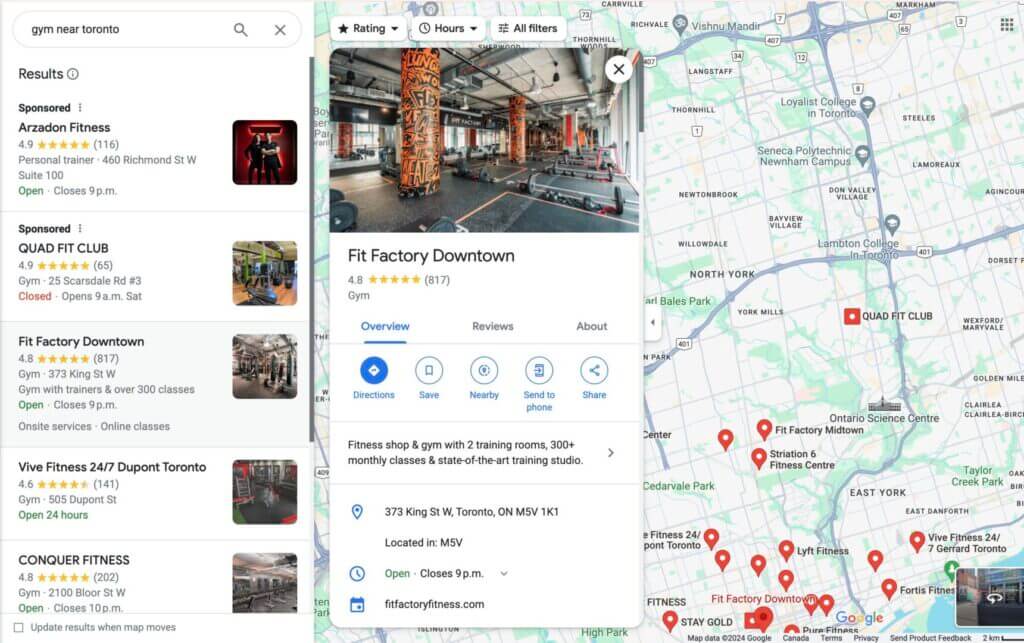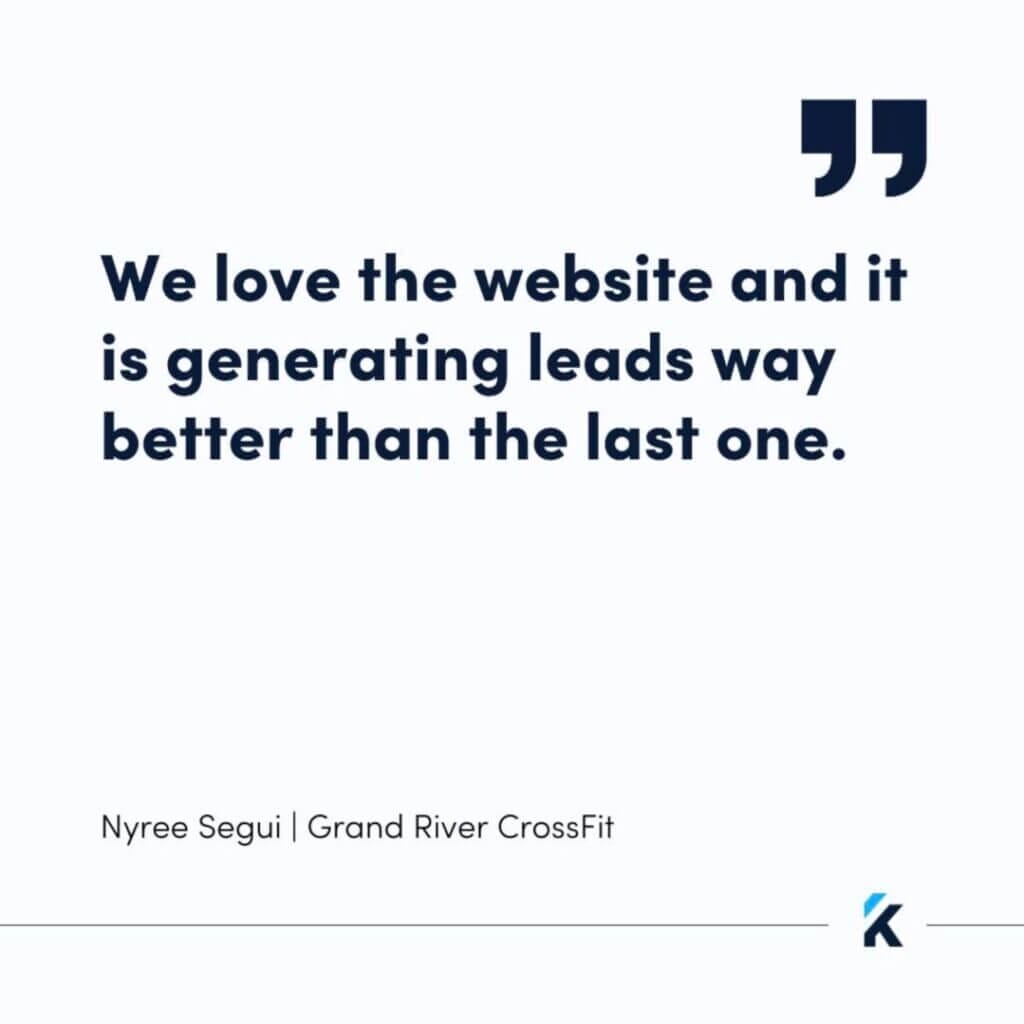How often do you go past the first page when searching on Google? Most of us don’t, and it’s the same for people looking for a great gym. They tend to pick from the top results.
So, how can your gym land in those top spots?
This is where SEO, or search engine optimization, plays a key role. By applying SEO strategies to your gym’s website, you boost its ranking in Google’s search results. A higher ranking means more visibility, more leads, and ultimately, more business growth.
Here are six effective SEO strategies to launch your website to the top of search results.
1. Optimize Your Gym’s Website
Boosting your gym’s search rankings starts with your website. Make sure it’s mobile-friendly first. Lots of potential members will visit your site on their phones or tablets, so it needs to work well and look great on any device. Google gives preference to websites that are easy to use, have the right keywords, and feature relevant content.
Alongside mobile-friendliness, speed is key. A quick-loading website creates a better user experience (UX) for your visitors, keeping them engaged and signaling to Google that your site is high-quality.
Luckily, Kilo gym websites are designed with both these factors in mind, ensuring they are fully optimized for speed and mobile use.

Remember, when you optimize your site, it climbs up in Google’s rankings. As it becomes more visible, more people will find and visit your site from search results. And a higher number of visitors clicking through tells Google your site is exactly what people are looking for.
💡 Related: Our Guide to Creating the Best Gym Website Design
2. Target the Right Keywords
When people search online for a gym, they use specific words or phrases – these are your keywords. It’s important to include these keywords on your website and in your content to attract your target audience. A helpful start is to list keywords that relate to your gym and its services.
Google Keyword Planner is a great tool for figuring out which keywords are relevant and how often people search for them. This gives you an idea of the most popular searches related to your gym. Another beneficial tool is RankMath. It helps ensure you place your keywords effectively throughout your site’s content.
By carefully selecting and strategically placing the right keywords, you can significantly boost your gym’s online presence and connect with more potential members.
💡 Tip: For local searches, phrases like “gym near [your city]” or “fitness centre near me” are often what locals type when they’re looking for a gym nearby.
3. Create Compelling Content
Content that’s interesting and informative is key to climbing the ranks in Google search results. The algorithm tends to favor blog posts that are around 1,500 words or more, which allows you to cover topics in depth.
But it’s not just about word count. Your content has to be readable and coherent. To achieve this, incorporate keywords naturally to ensure your articles are both SEO-friendly and engaging for readers. Over-stuffing keywords can be counterproductive, as it impacts readability and user-experience. Simply put, neither Google nor your audience will like it.
That being said, it’s also important to write about topics that speak to your audience’s interests and needs. This approach engages your current readers and attracts new ones who are seeking what your gym offers.
And finally, regular posting is another critical factor. Consistent posts tell Google that your site is active and a reliable source for users. But don’t let frequency override quality. Finding a balance between regular updates and high-quality content, even if it means posting just once a month, is vital. It keeps your audience coming back for more and helps establish your gym’s website as an authority in the industry.
💡 Related: How to Beat 90 Percent of Local Gym Competitors With Content
4. Strengthen Your Site with Internal Linking
Internal linking means using hyperlinks to connect different pages of your website, like so:

This does a couple of important things. First, it helps Google understand how your site is organized and how different pages are related. Google can then recognize the relevancy and value of your pages, improving your site’s ranking.
Second, internal links make your site easier for visitors to navigate. It guides them to related content, keeping them engaged and on your site longer, which increases the likelihood of them hitting your call to action button. This not only enhances user experience but can also help turn visitors into leads.
5. Leverage Your Google Business Profile
Most people will see your gym’s Google Business Profile before they even visit your website.

An unoptimized profile could mean you’re harder to find, reducing your visibility. Regularly updating it, however, can push your profile to the top of search rankings. So, to ensure your gym stands out, here’s what you need to focus on:
Complete Your Profile: Ensure every section is filled in and accurate. Highlight what your gym offers and showcase it with high-quality interior and exterior photos.
Encourage Reviews: Actively encourage your members to leave reviews and make a point to respond to each one. This shows that you value client feedback and are dedicated to their experience.
Consistency in NAP Details: Your gym’s name, address, and phone number should be identical on your Google Business Profile, website, social media, and other listings. This consistency helps people find your gym more easily and improves local search rankings.
💡 Read more: How to make your gym stand out online
6. Measure, Learn, and Enhance Your SEO Efforts
Effective SEO is an ongoing process, which is why keeping track of your gym’s ranking on Google is essential. Tools like Google Search Console are perfect for this, helping you monitor your SEO performance. Google Analytics complements this by providing insights into your website’s traffic and how visitors interact with your content, guiding you on what’s working and what needs improvement.
Also, it can be helpful to ask your new members how they found your gym. If they’re finding you through Google, it’s probably a strong indicator that your SEO efforts are paying off. This continuous cycle of monitoring, learning, and improving is key to keeping your gym’s online presence strong and effective.
Wrapping Up
Knowing how to use SEO and applying these strategies can help you climb to No. 1 on Google search results. By focusing on these key tips and insights, you’ll not only increase your website’s visibility but also boost your gym’s overall profitability.
And if you’re looking for an optimized website that attracts more leads and ranks well on Google, book a call with our team at Kilo, and we’ll get you set up with a gym website designed to achieve just that.







